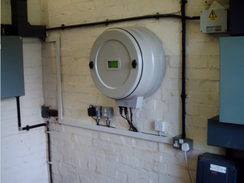
How Can PD Monitoring Be Used More Effectively?
19 / 06 / 19
Welcome to the first instalment of our brand new ‘Ask the Expert’ series. IPEC recently spoke to Martin Judd, a partial discharge specialist at High Frequency Diagnostics and Engineering. HFDE is a Glasgow based consultancy business specialising in high frequency sensing and diagnosis of PD activity in high voltage equipment.
Martin was one of the early pioneers of UHF (ultra-high frequency) techniques for PD detection that are now widely used for condition monitoring of gas insulated substations (GIS). He was based at Strathclyde University in Glasgow from 1993 to 2014, most recently as Professor of High Voltage Technologies.
In this blog post, Martin shares advice he would give to those involved with PD monitoring of high voltage insulation.
![]()
How PD monitoring can be used more effectively
Most on-line monitoring or periodic surveillance of PD is performed using measurement methods that are not calibrated in the same way factory tests to IEC60270 are carried out. So-called ‘unconventional’ monitoring techniques are widely used. For example, those covered in IEC Technical Specification 62478:2016, “High voltage test techniques – Measurement of partial discharges by electromagnetic and acoustic methods.”
Detecting and identifying PD is relatively straightforward. The real challenge concerns the decisions that follow on from this point. Particularly whether any action should be taken, and what the appropriate action is.
Identifying PD, classifying its type, and estimating its magnitude may not provide sufficient clarity for a course of remedial action to be defined with confidence. An understanding of the history and context is equally important. Otherwise, the asset manager can be faced with a task comparable to deciding whether a vehicle is safe to drive (or not) solely on the basis of a spot measurement of tyre pressures.
The TLC Checklist
The following “TLC” checklist summarises the factors I would take into account before deciding what actions to recommend once PD activity has been confirmed:
1. Trending
What is the historical development of the PD activity? Is the magnitude increasing? Is the repetition rate of PD pulses increasing? In simple terms, the rate of damage to insulation can be linked to how energetic the PD is. This depends on both the magnitude and number of pulses.
2. Locating
The location of PD should be specific. For example, ‘in the main tank of the transformer’ is too general. There is a big difference between PD from something like a core-earth fault that may produce high levels of gas in the oil and PD due to tracking on barrier boards that could flash over during a system transient. Both UHF and acoustic methods can help to locate the PD source within a specific small area of the tank. These tests usually require a specialist measurement carried out while the equipment remains in service.
3. Corroborating
Data from similar types of plant being monitored with the same sensors and equipment is one of the most valuable sources of information. This helps to distinguish between normal and abnormal signals detected by PD monitoring systems. This is particularly the case when PD (or PD-like signals) can occur during normal operation, such as in rotating machines. It is also effective to identify anomalies when behaviour is uncharacteristic amongst a particular plant type. This would then prompt further investigation. When this is not possible, there are other sources of relevant measurement data that can help with understanding and interpreting the causes of PD. Depending on the type of HV equipment, these might include temperature, loading, voltage, current, tap position, humidity, etc.
IPEC specialise in the design and manufacture of partial discharge monitoring and testing solutions for the power industry. Our PD products range includes Portable Switchgear PD Testing Instruments, Cable PD Testing Systems, Permanent PD Monitoring for MV, HV and EHV systems and our range of PD Sensors. Visit our product page to find out more about our PD monitoring solutions.




